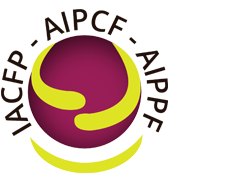The Interphantasmatization Model. The Linking Psychic Apparatus: Family, Couple, and Group.
Ezequiel A. Jaroslavsky (Buenos Aires), Irma Morosini (Buenos Aires)
In this way, this Linking Psychic Device operates in families and couples, a code processor, which transcribes at an intrapsychic level what operates in the intersubjective space. (Morosini, I. 2006)
In families and couples with pathological vicissitudes, regressive phenomena predominate with their effects of indiscrimination, deficit of symbolic verbal exchanges and desubjectification of their members (Jaroslavsky EA 2005).
The approach technique in family therapy (TFP), couple therapy (TPP) and parent/child relationship requires a stable setting (Bleger J. 1971), transference deployment and the use of countertransference by the team. therapeutic, and although it fundamentally tends towards verbalization and the deployment of the group associative chain through the invitation to free association, it can also be complemented with forms of play, creative expressiveness (use of masks, modeling, etc.), and psychodramatic staging.
The basic idea is to make the therapeutic space a transitional space (Winnicott D. 1971) and intermediary (Eiguer A. 2006) that operates as a facilitator of processes of verbalization, symbolization, subjectivation and discrimination of its members and that facilitates the emergence of fantasies. secondary and also allows the elaboration of grief and traumas transmitted transgenerationally.
Our challenge is to unravel what is hidden that has been rendered meaningless by not having accessed the mental space, but that endures in the collective parental and family memory and that can emerge in an appropriate context. The way to do this is through words and/or play, which the present family members can create from their own dreams, fantasies and associations.
In certain cases, it seeks to work with elements (graphics, drawings, or proposed dramatizations, etc.) that at a preconscious level stimulate memories, feelings, experiences, that allow the deployment of the associative link chain, carrying out emotional and comprehensive linking work. . The function of the psychoanalyst is both continent and interpretive according to the moment that requires it.
The work framework involves meetings that range from once a week to twice a month. We do not favor more widely spaced frequency intervals in the initial work time. The duration of each session should be stable from 50 or 60 minutes (preferably in pairs), and from 1 to 2 hours (preferably in families, according to their needs).
Working with families and couples requires a clear work framework from the therapeutic team, as well as sufficient plasticity and availability of various technical resources. A new group is formed between family members and the therapeutic team (E. Granjon, 2006). The modifications that are obtained not only in the symptoms but also in the ways of family relationships and their persistence over time, lead us to think that these are true psychic changes.
Bibliography
- Anzieu D. (1975): The group and the unconscious. The group imaginary. New Library. 1986. 2nd edition, Madrid.
- Aulagnier P (1975), The violence of interpretation, Amorrortu editors, 1977, Buenos Aires.
- Bernard M. (1999): The organizers of the link of the drive to the other, Magazine of the Association of Group Psychology and Psychotherapy, Volume XXII, No. 1, 1999, Buenos Aires.
- Bernard M. (1991): Introduction to reading the work of René Kaës, Publicación de la, Buenos Aires.
- Bernard. M. (2001): Links in contemporary French psychoanalysis, seminar No. 1 of August 17, 2001, Argentine Association of Group Psychology and Psychotherapy, Buenos Aires.
- Bleger José (1971): Symbiosis and Ambiguity, a psychoanalytic study, Editorial Paidós, Buenos Aires. 1971.
- Eiguer A (2006): For a recreational family psychoanalysis. Psychoanalysis and Intersubjectivity Magazine, No. 1 www.intersubjetividad.com.ar .
- Granjon, E. (2006): Le néo groupe, Le Divan Familial, Paris, In Press.
- Jaroslavsky E. A (2006): The contemporary Franco-Argentine bond model. Psychoanalysis and Intersubjectivity Magazine No. 1 www.intersubjetividad.com.ar .
- Jaroslavsky E. A (2006) : Indicators de changement dans les thérapies de couple. From trans-subjective transmission to intersubjective transmission. Le Divan Familial Nº 14, Printemps 2005. Paris.
- Kaës R. (1976) : L’Appareil psychique groupal. Constructions du groupe, Paris, Dunod (new edition 2000).
- Kaës R. (1999) : Les théories psychanalytiques du groupe, PUF, Paris, trans. esp. The psychoanalytic theories of the group, Amorrortu, 2000, Buenos Aires.
- Kaës, R. (1993) et al.: Transmission of psychic life between generations. Amorrortu editors, 1996. Buenos Aires.
- Morosini I. (2006): Filial Symbiotic Bonding: The infans captured by desire and maternal discourse, Rev. Psychoanalysis & Intersubjetividad Nº 1 www.intersubjetividad.com.ar .
- Pichon – Rivière, E. (1979): Link Theory. New Vision. Buenos Aires.
- Ruffiot. A, (1981), Le groupe famille en analyse, L’appareil psychique familial, Dunod Publishing House, 1981, Paris.
- Ruffiot A. (1984), Le couple et l’amour. De l’originaire au groupal, in Ruffiot A. et al. La thérapie psychanalytique du couple, Dunod, Paris.
- Winnicott D. (1971) Reality and Game, 1972, Granica Editorial, Buenos Aires
